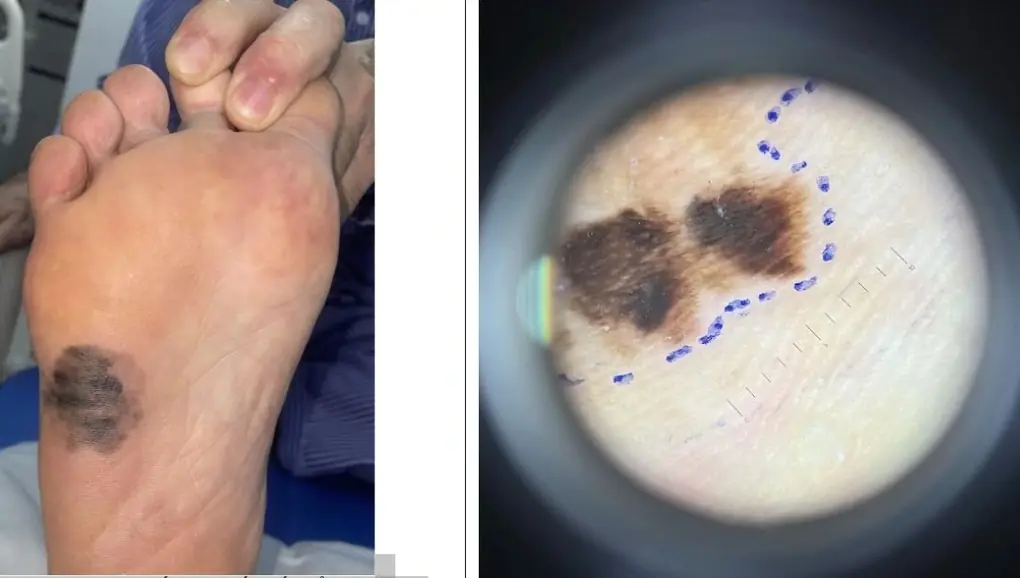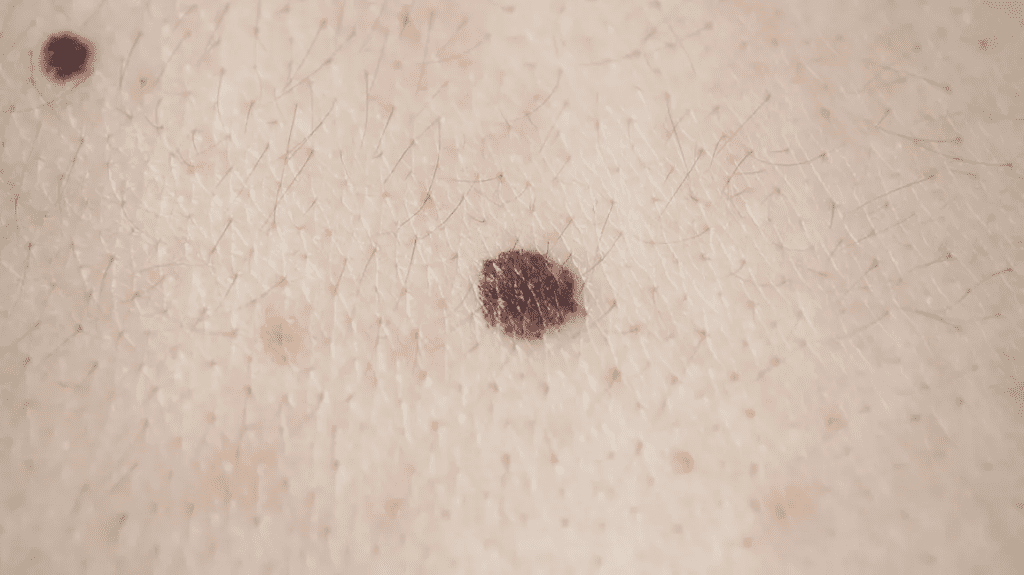Black spots on the skin can be alarming, but they are not always a cause for concern. However, in some cases, they can signal a dangerous form of skin cancer known as melanoma. This aggressive cancer can develop anywhere on the skin, including the soles of the feet, and early detection is critical for successful treatment.
A recent case at the Central Dermatology Hospital highlighted the importance of recognizing melanoma symptoms early. A 70-year-old male patient sought medical attention for a hyperpigmented macule on his foot, which had been present for 10 years but recently started growing. Doctors confirmed it as melanoma, a potentially life-threatening skin cancer. This case serves as a critical reminder to monitor skin changes and seek professional evaluation when necessary.

Understanding Melanoma: The Deadliest Form of Skin Cancer
Melanoma is a type of skin cancer that originates from melanocytes, the cells responsible for producing pigment (melanin). While it can develop anywhere on the skin, it is particularly dangerous when it appears on areas like the soles of the feet, where it often goes unnoticed for years.
Melanoma is aggressive and can spread to other organs if not detected early. The American Cancer Society reports that melanoma accounts for only 1% of skin cancers, but it causes the majority of skin cancer-related deaths.
How Black Spots on the Skin Can Indicate Melanoma
Not all dark spots on the skin are dangerous, but certain changes in appearance should raise concern. Melanoma lesions often present as dark, irregularly shaped spots that evolve over time. The ABCDE rule is a helpful way to assess potentially cancerous moles:
- A – Asymmetry: The two halves of the mole do not match.
- B – Border: The edges are irregular, jagged, or poorly defined.
- C – Color: The mole has multiple colors, such as black, brown, blue, red, or white.
- D – Diameter: Any mole larger than 6mm (about the size of a pencil eraser) should be evaluated.
- E – Evolving: If the mole changes in size, shape, or color over time, it could be melanoma.
The Case of a 70-Year-Old Patient: A Lesson in Early Detection
At the Central Dermatology Hospital, a 70-year-old patient presented with a dark lesion on his foot that had been present for a decade but started growing over the past year. Initially, the spot was painless and non-ulcerated, so the patient ignored it.
After reading an article about melanoma, the patient decided to seek medical attention. Doctors diagnosed melanoma based on the lesion’s asymmetry, uneven color, and irregular borders. The lesion was over 3 cm in diameter, indicating a high-risk case.
Diagnosis and Treatment of Melanoma
To confirm the diagnosis, the doctors performed a histopathological examination after surgically removing the tumor. The biopsy results confirmed melanoma with a Breslow thickness of <0.5 mm, a critical measure of how deep the cancer had spread into the skin layers.
Surgical Treatment
The patient underwent:
- Complete excision of the melanoma with a 1 cm margin to prevent recurrence.
- Skin grafting to cover the defect left after tumor removal.
- Sentinel lymph node biopsy to check for possible cancer spread.
Fortunately, the results showed no lymph node involvement, meaning the cancer had not spread beyond the skin. Since the melanoma was stage 1A, the patient did not require chemotherapy, radiation, or immunotherapy but needed regular follow-ups for five years.
Risk Factors for Melanoma

Certain individuals are at higher risk for developing melanoma, including those with:
- Fair skin that burns easily.
- A history of excessive sun exposure or tanning bed use.
- A family history of melanoma.
- A weakened immune system due to medical conditions or medications.
- A large number of moles (more than 50) or atypical moles.
Even individuals with darker skin are not immune to melanoma. Acral lentiginous melanoma (ALM) is a rare but aggressive form that commonly appears on the palms, soles, and under the nails—areas not typically exposed to the sun.
Why Early Detection Matters
Melanoma is highly treatable when caught early, with a 5-year survival rate of over 90% for localized cases. However, if it spreads to distant organs, the survival rate drops to less than 30%.
Regular skin checks and professional dermatologist visits can help detect melanoma at an early stage, increasing the chances of successful treatment.
Prevention: How to Reduce Your Risk of Melanoma

While genetics play a role, you can lower your risk of developing melanoma by taking these precautions:
- Use sunscreen daily (SPF 30 or higher), even on cloudy days.
- Avoid tanning beds, as UV radiation increases skin cancer risk.
- Wear protective clothing, including hats and sunglasses.
- Perform monthly self-exams, checking for new or changing moles.
- Seek medical attention if you notice any suspicious skin changes.
Final Thoughts: Don’t Ignore the Warning Signs
Black spots on the skin may be harmless, but they can also be an early warning sign of melanoma. The case of the 70-year-old patient is a powerful reminder of why early detection is crucial. By following the ABCDE rule, being aware of risk factors, and taking preventative measures, you can protect yourself from this deadly disease.
If you notice any abnormal changes in your skin, don’t wait—consult a dermatologist immediately. Early detection could save your life.


